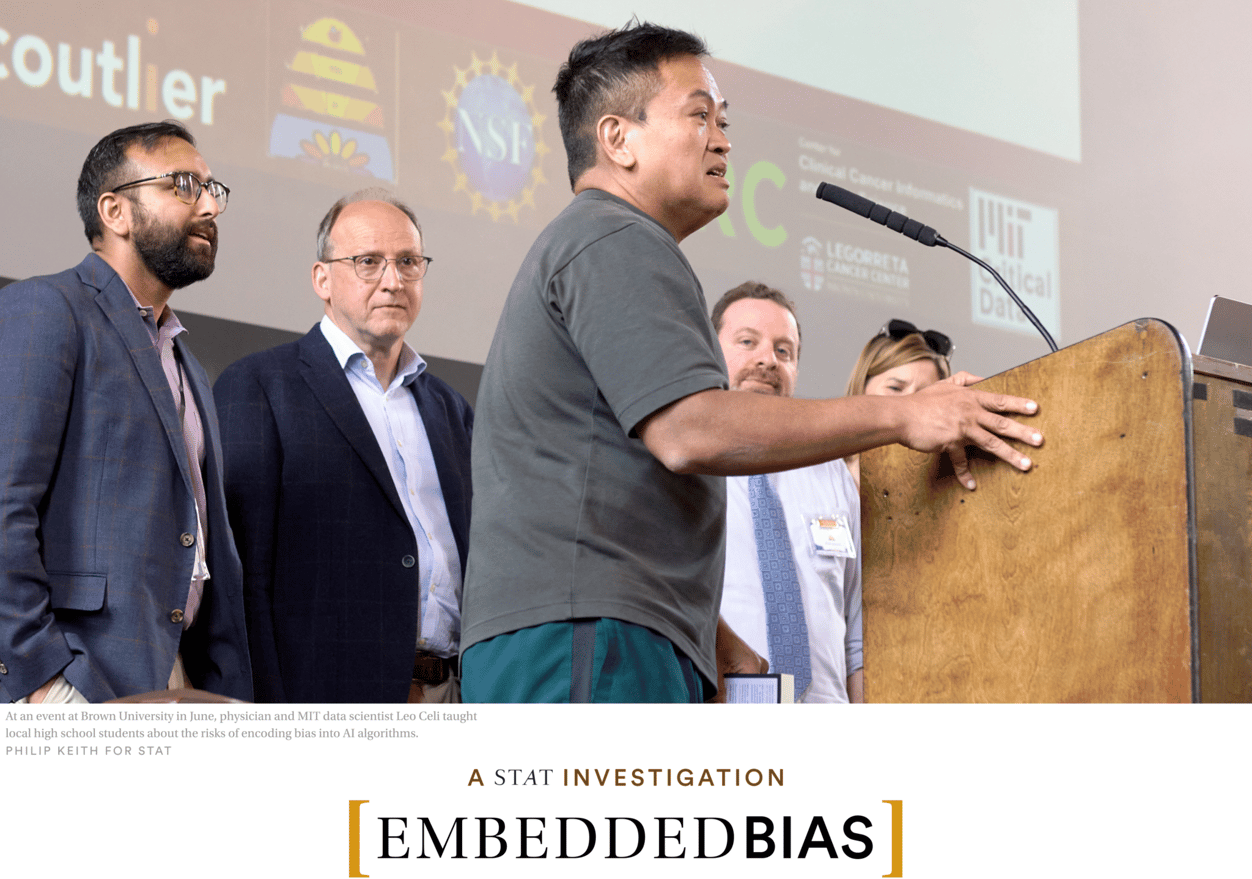stat investigation
The peril and promise of AI in clinical algorithms

In their "Embedded Bias" series, STAT's Usha Lee McFarling and Katie Palmer have dived deep into the flawed algorithms that factor race into medical decision-making. But there's another problem — even if the algorithms were perfect, what if the real-world data plugged into them aren't?
Take the pulse oximeter. These tools are notorious for delivering less accurate blood-oxygen readings for people with darker skin tones, and a stark example of how racial bias can sneak into seemingly objective medical data. But fundamentally, all clinical prediction tools are built on the same flawed data. We have limited access to information about disadvantaged groups — whether racial and ethnic minorities, rural patients, or people who don't speak English as their first language.
Without action, AI stands to cement bias into the health care system at disquieting speed and scale. Read more from Katie in the last story of the series.
mental health
Better health insurance and internet access associated with lower suicide rates
Nearly 50,000 people in the U.S. died by suicide in 2022, making it the second leading cause of death among people ages 10 to 34. A report from the CDC released yesterday highlights the ways that Americans' socioeconomic realities may impact their risk of suicide. The report found that suicide rates were lowest in counties with the highest levels of health insurance coverage, internet access, and household incomes. These same factors were particularly associated with lower suicide rates in populations that are at disproportionately high risk for it, including American Indian or Alaska Native populations, white people, and males.
It's unclear exactly why these factors correlated with lower suicide rates, or why they seemed to have stronger associations among certain groups. But the data demonstrate the importance of implementing programs and policies that improve the communities in which people live and work, the authors wrote.
Also yesterday, HHS and SAMHSA announced $68 million in funding for suicide prevention and mental health care programs. That money will be divided to go to states and tribes, colleges and universities, and other groups with a particular focus on suicide prevention for young people.
commercial determinants of health
The researcher who wants to supersize his studies on ultra-processed foods
Kevin Hall is a self-proclaimed "failed physicist," and one of the only researchers doing controlled feeding trials for ultra-processed foods. With a small but consistent stream of federal funding, his team controls what study participants eat for a month to better understand whether a diet of foods like chicken fingers and mac and cheese might prompt people to eat more than when they're fed unprocessed foods.
Looking into industrial food creations like sodas, breakfast cereals, and hot dogs is critical to improve public health, Hall and other nutritionists believe. But some nutrition scientists have challenged Hall's work. "Studies on diet, energy balance, and body weight lasting only two weeks are less than useless because they are likely to be seriously misleading," Walter Willett, the most-cited nutritionist in the world, said about Hall's first study, which saw participants eating ultra-processed foods for two weeks, then unprocessed foods for the next two weeks.
But Hall forges ahead. He's hoping to gain interest in his research from the same industry leaders who create ultra-processed food. Read more in a profile from STAT's Nick Florko.


No comments